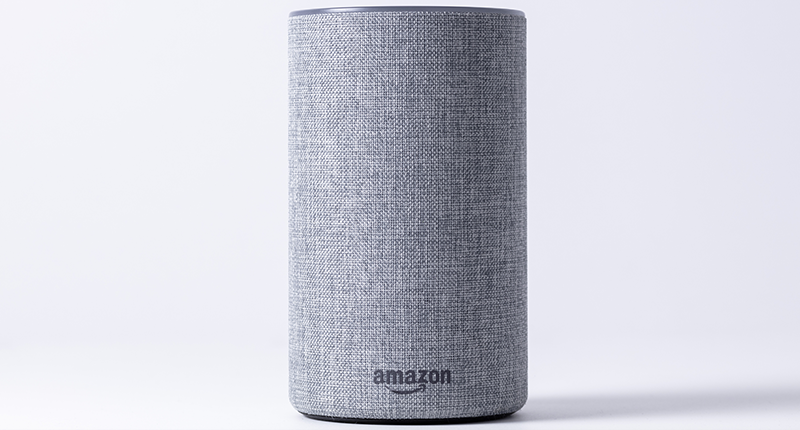Find out more about The Open University's Environment courses
Reducing digital carbon footprints of digital assets
The digital carbon footprints of our technology assets are split between the carbon dioxide equivalent (CO2e) emissions caused when manufacturing, storing and shipping the products and the emissions generated through use and disposal.
As discussed in the responsible procurement article, the balance of these is split unequally, with the upfront, or embodied, and disposal carbon being the significant factors.
While many parts of the technology supply chain are on a renewable energy road to decarbonisation, we should all adopt more carbon and environmentally conscious attitudes to purchasing and disposal, since this will have the greatest collective impact for years to come.
Working with procurement, IT managers can significantly cut the embodied carbon cost of their assets through a circular IT approach to extending technology lifetimes, considered equipment repurposing and verified recycling. Remanufactured and refurbished technology options are rapidly becoming more accessible, and more viable.
However, what can be done to reduce the carbon footprint of devices and equipment already in operation?

Operational digital carbon footprints
The operational footprint of digital products is currently estimated at 20% of the total lifetime carbon emissions, so we might be lured into thinking that this isn’t an area of immediate priority. But we’d be wrong.
There are two reasons for this.
First, our use of digital technology has been on an exponential growth curve for decades. The COVID-19 pandemic was reported to have accelerated this in some sectors by a factor of six.
Now, after the pandemic-peak and chip-shortage-slump, our dependence on, and usage of digital technologies continues on an exponential trajectory. This means that, if unabated, the operational costs could also accelerate at rapid pace.
Second, at the time of writing, global energy prices are at unprecedented levels and set to rise further. As such, there are both financial and environmental benefits for focusing on reducing operational carbon costs.
The symbiosis between carbon and financial savings is true in a more general sense, too, with efforts to reduce carbon emissions often directly correlating to tangible bottom line benefits. However, a sustainability focused call to action has been demonstrated to be a more compelling reason to change for many, than simple ‘cost cutting’ campaigns, thereby leading to a reduction in both financial and carbon costs with less corporate motivational effort.
Relying on supplier carbon reductions?
As part of the supply chain’s move to renewables, it could be fair to assume that as the energy supplies to our facilities and the facilities of those we depend on (eg, the internet and cloud infrastructure) decarbonise, so too does our operational footprint.
This will indeed be a factor, yet the Intergovernmental Panel on Climate Change (IPCC) were clear about their concern on this topic in their sixth report:
‘There is growing concern that remaining [infrastructure] energy efficiency improvements might be outpaced by rising demand for digital services….’
So while we might lean on the scale factor of the cloud, internet and national grid as ‘decarbonisation enablers’, we simply cannot entrust all of our sustainability strategy in them.
Operational on-prem digital carbon footprints
The term digital carbon footprints broadly encompasses technologies and peripherals that are used to either facilitate our digital activities, or are driven by them. This includes obvious candidates such as mobile phones and laptops, but also extends to less obvious items such as Wi-Fi access points, ‘smart’ devices, IoT sensors, IP cameras, websites, data storage, social media and online meetings.
Vampire devices
Around 20% of a typical building’s energy consumption, and therefore energy related carbon emissions, comes from devices that continue to drain electricity supplies when seemingly ‘off’.
These are devices that are plugged in and either forgotten about or deemed to be using inconsequential amounts of energy.
As an example, Amazon’s Echo smart speaker consumes between 2.4W to 3.8W when plugged in, connected to Wi-Fi, just listening. This might not seem like much, especially when the whole point of the device is to be ready for a voice command at any time. However, there are likely to be regular periods of time when the device is extremely unlike to be needed; overnight, weekends, holidays etc.

Turning off the smart speaker overnight (between 11pm and 5am) would save 22W of power a day, which equates to more than 8kW a year, the equivalent of about 2kg of CO2e or 5.56 miles driven in a typical petrol-powered car (conversion factor used 0.35915 from here), which is incidentally the same as the average daily UK commuter distance. this means turning off your Alexa overnight saves as much carbon in a year as the average car drive commuter journey.
That’s just one, small device. Prosumer ink jet printers consume about the same amount when in standby, whereas computers and laptops consume between 2W to 10W of power when in stand-by or sleep mode.
Putting this into context; leaving ten average laptops on standby overnight for 365 days a year would waste 307 kWh of electricity per year. Using the live carbon intensity of the UK’s national grid of 226 gCO2e/kWh, this equates to 69 kg of carbon emissions from the wasted energy use of just ten laptops.
If you have more than ten laptops, and account for time they are on idle over weekends or holiday periods, then this number can become unfathomably high.
Turned up to the max
Vampire devices are responsible for digital carbon emissions from the wasted energy use of things on standby. Another common area of wasted energy use is in devices that are shipped with unnecessarily high default settings – LCD monitor brightness, Wi-Fi transmit power, for example.
In my research, turning my monitor down from the default 95% to 55% resulted in no discernible difference in comfort or use, but cut my energy consumption for that one device by 10w, immediately. The equivalent of another 4.7 kg CO2e per year or almost £7 per year at today’s prices from a single device.
The examples mentioned above all deliver savings in reduced wasted energy and therefore reduced carbon emissions, with no detectible difference to usage. The savings might be small individually, but at an organisational scale, they can deliver a cumulatively meaningful impact.
Video conferences
The frequency of online meetings and team video calls rose meteorically during COVID-19 and now many of us believe conducting business remotely over video calls is better than the alternative.
Well, it is, and it isn’t.
Of all the contributors to our digital carbon footprints, video is by far the heaviest. Internet- based video (streaming, video conferences, IP security cameras, gaming etc.) is also the fastest growing category of internet use.

Since each and every byte of data has a carbon footprint, technologies that create high amounts of data like video streams can account for incredible amounts of carbon.
As an example, a one-minute HD video call between two people on Zoom can be responsible for 44 g CO2e per minute. Again, this seems small, but at the scale we use online meetings today, that soon adds up to tonnes of carbon a year.
A hundred staff, participating in just two one-hour, one-to-one Microsoft Teams calls as day over a typical working year adds up to more than nine tonnes of CO2e/year. If they used Zoom, it would be more than double that since Zoom’s bandwidth requirements are more than double.
A simple tip here is to switch from HD to SD (cutting the emissions by half) or turn off video altogether and use audio, like we did before mass acceptance of video calling. The same Zoom scenario above, but using audio only, would cut the associated digital carbon emissions by 98%.
When on-prem is off-prem
There are a couple of areas where the definition of ‘on-premises IT’ might feel a little stretched but are of equal validity.
Remote energy
With a pandemic-driven shift to remote and distributed work forces, it could be easy to fall into the trap of ‘out of sight, out of mind.’ Beyond the mental health and productivity issues of this false assumption, we must acknowledge that energy consumed by our colleagues (and even by end users while using our products) is the responsibility of the organisation.
These emissions fall into what is known as the Greenhouse Gas Protocol’s Scope 3 emissions. As such, from an IT manager’s point of view, the products acquired for, and the energy used and wasted while working away from the office must also be considered and accounted for.
Building management
More of our buildings are becoming ‘smart buildings’, and as such have an increasing IT dependency. IT managers are increasingly becoming responsible for the operation of building management systems, information display and energy optimisation technologies. The acquisition and operational carbon costs of these also form part of the overall on-premises IT digital carbon footprint.
Summary
The digital carbon footprint of on-premises IT equipment comprises of embodied, operational and disposal carbon emissions. While responsible procurement practices can help with much of this, awareness of the potential for escalating operational emissions should not be ignored.
As with all aspects of tackling our digital carbon footprints, it all starts with awareness and small steps.The opportunity to raise awareness of, and therefore minimise unconscious wasted energy consumption, presents the potential for significant cost and carbon savings at scale, without impacting performance or experience.
More on digital carbon footprints
This resource is part of the Supporting hybrid working and digital transformation collection, made possible by the Higher Educational Funding Council for Wales.








Rate and Review
Rate this article
Review this article
Log into OpenLearn to leave reviews and join in the conversation.
Article reviews